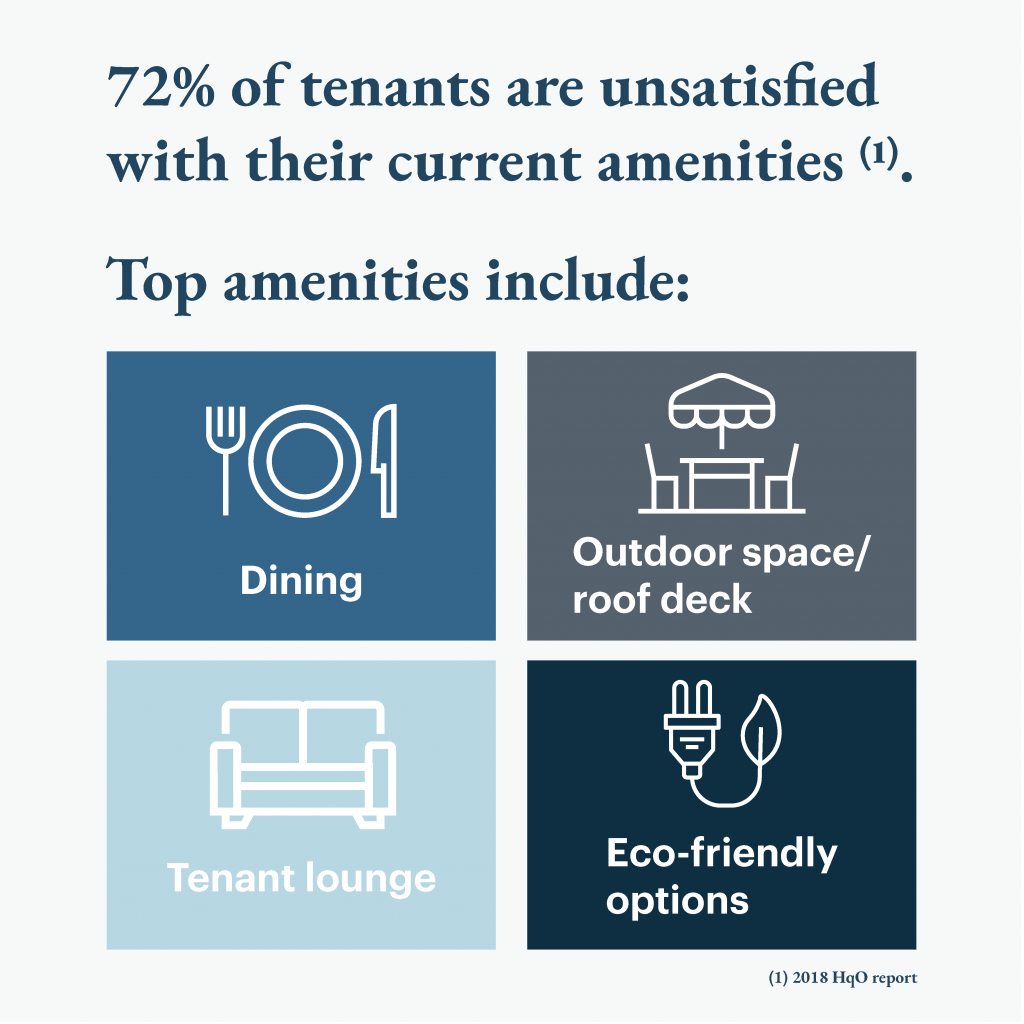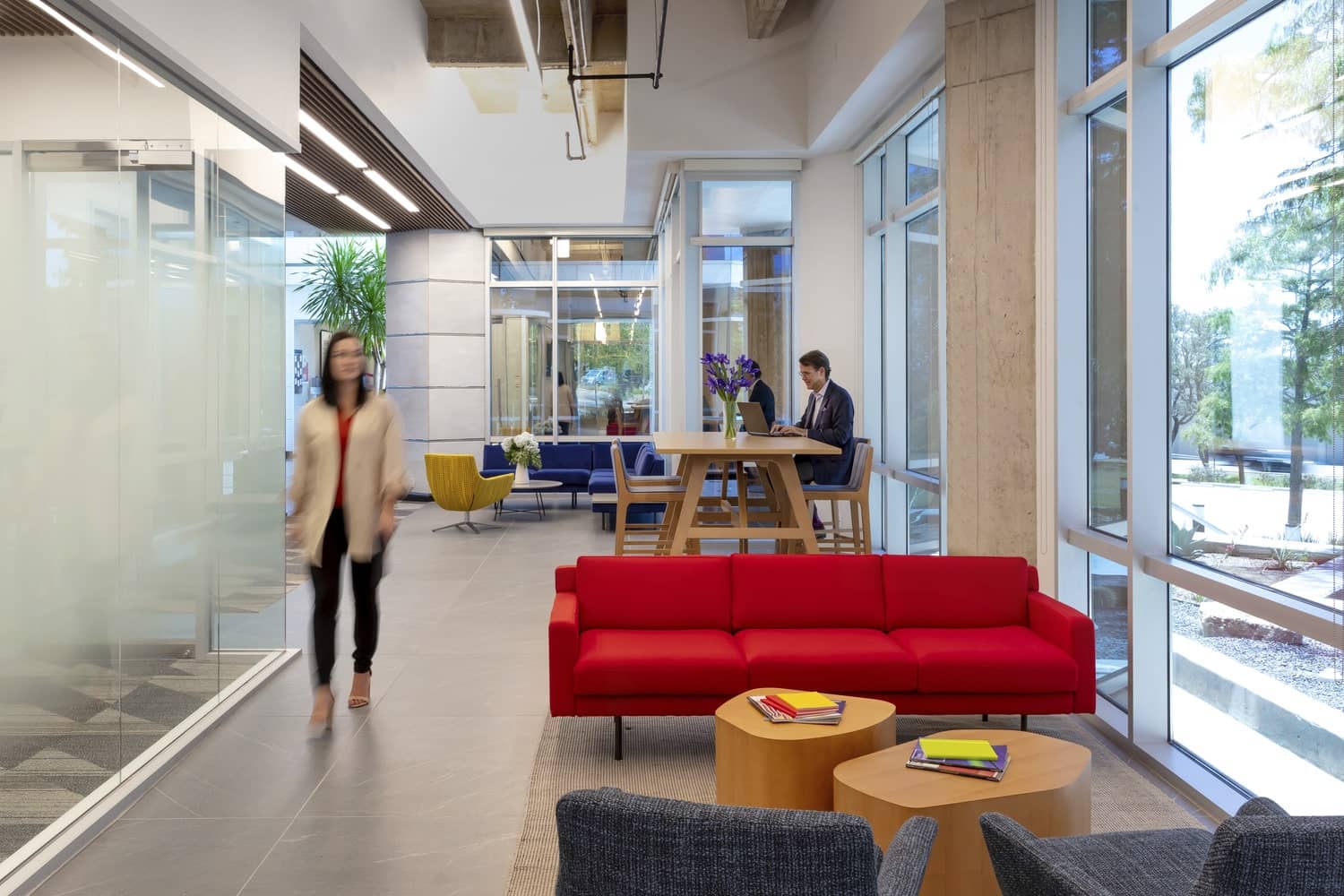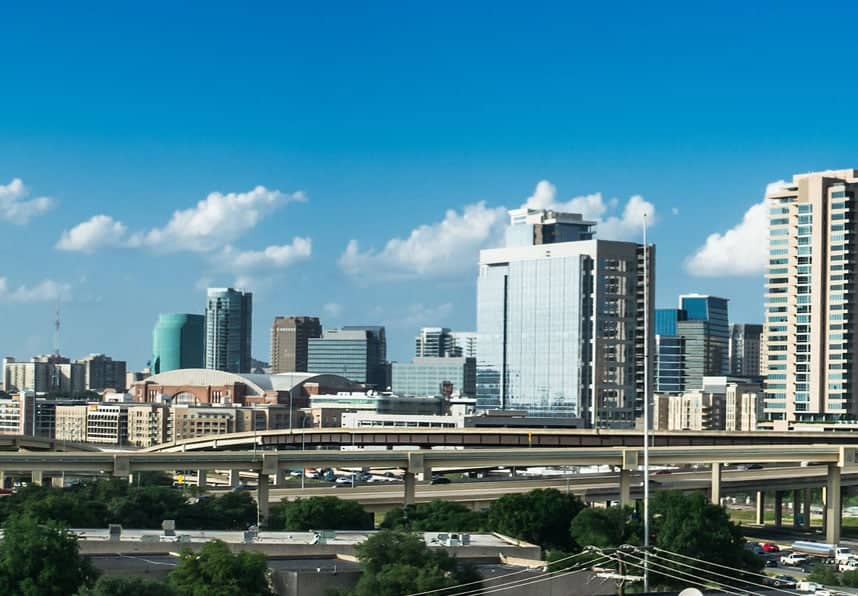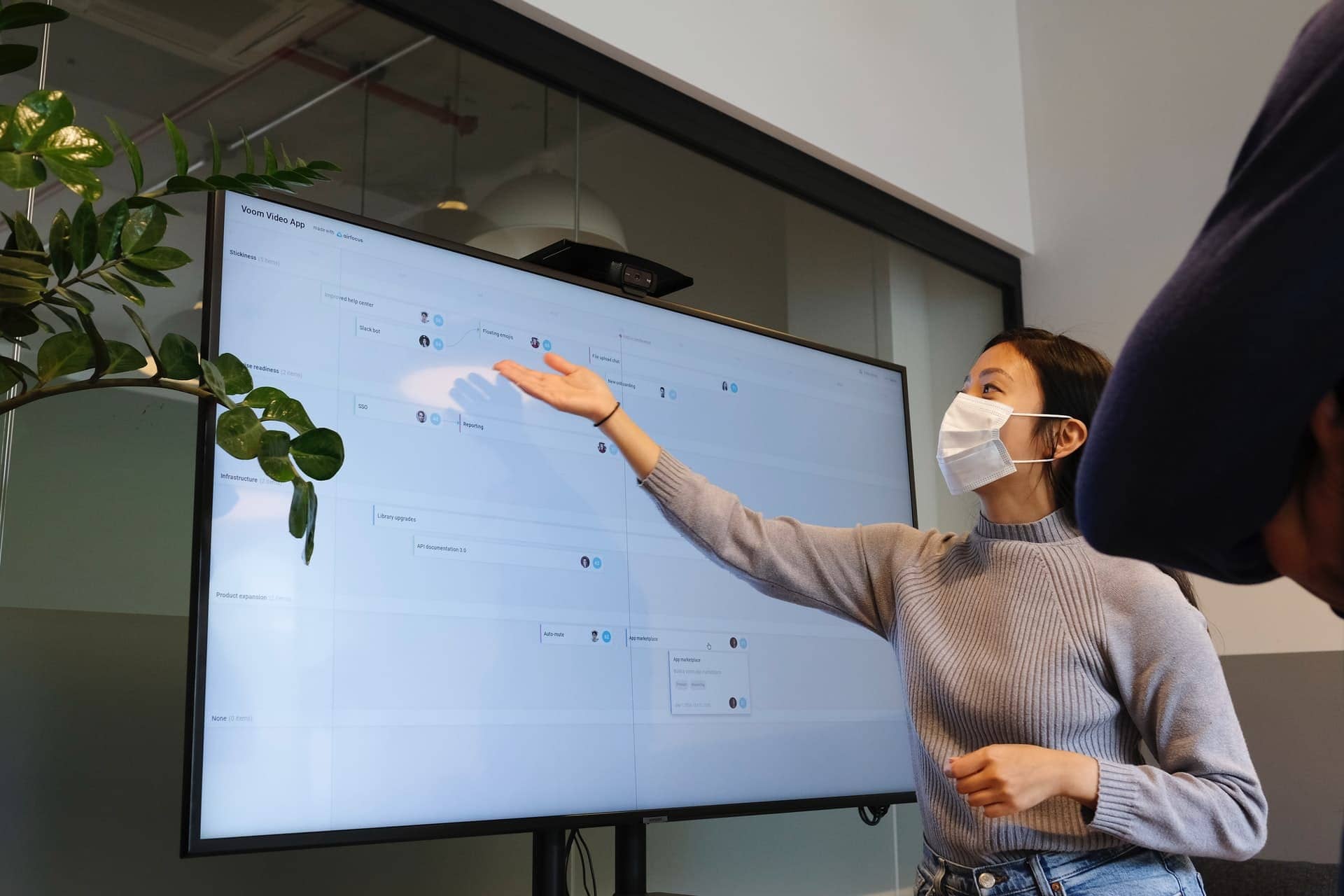According to an HqO report, 72% of tenants are unsatisfied with their current amenities, which is a pretty significant disconnect between landlords and tenants. This can largely be attributed to the lack of understanding of tenant needs and what motivate them to thrive in the workplace. Oftentimes office building landlords do not offer adequate or enough amenities, while others overcompensate with extreme offerings that do not fit the tenant profile.
Throughout the KBS portfolio, we see many correlations among properties and what tenants are looking for. I wouldn’t consider many of these particularly exciting or sexy, but they represent practical and hands-on amenities that promote the tenant experience and create a healthy work/life balance. In general, the most important building amenities KBS tenants want are:
- Dining
- Parking and access to transportation
- Conference and meeting space
- Retail
- On-site fitness center
- Outdoor space/roof deck
- Tenant lounge
- Eco-friendly options (such as EV charging stations)

In my opinion, food options are the most critical amenity to have at any building. Whether that’s a full on-site cafeteria or multiple walking options like restaurants or a Whole Foods. Additionally, based on our experiences in the D.C. area, we have had a lot of success and compliments from adding conference centers to our properties, which allow tenants to lease less space, yet still have the ability to host meetings or training seminars.
It should be noted that not all the amenities listed are a good fit for every building. Some buildings will benefit more from innovative and cutting edge amenities that add a certain “cool” factor. Other buildings will perform better by sticking with the basics. Whatever the amenity equation, it’s important to assess the relevance of each amenity within each market as some of these programs and services can lose their luster once the novelty wears off. What might be important to tenants in Portland, such as riding their bike to work (thus desiring buildings with bike lockers), may not rank as high as accessibility to transportation in markets like San Francisco.
For better or for worse—employees are spending more and more time at their workplace (except telecommuters, of course). The more you can make that workplace feel like home, allow people to get their errands done, escape their day with a workout or a game of ping pong, or have a TV/drink break at a coffee bar, the better they’ll feel and the more productive they are likely to be. And if a building can provide these conveniences without having to get in a car or travel, it’s an even better result.





